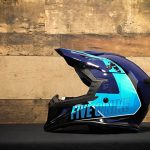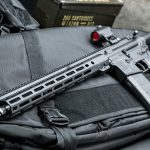Sales at specialty ski and snowboard shops were flat, up only 0.4 percent compared to last season. In dollars, that translates to $1.72 billion in salescompared to $1.71 billion in 2003. Unit sales were up from last season 4.0 percent.Sales for the month of March in specialty stores were $113.6 million compared to $122.8 million, a drop of 7.5 percent. Unit sales for the month of March were down 5.7 percent as compared to March 2003. “The snowboard market performed extremely well in the specialty stores this season with both equipment and apparel sales experiencing moderate growth,” said Christine Martinez, market research manager for SIA, the not-for-profit industry trade group that represents manufacturers and distributors of snow sports products.
Overall sales for the entire winter sport market (including specialty and chain stores), were flat — increasing slightly by 0.6 percent in dollars to $2.21 billion compared to $2.20 billion in 2003 for August through March according to the SnowSports Industries America (SIA) Retail Audit. Unit sales were ahead 3.5 percent. The SIA Retail Audit tracks and reports sales in all snow sports product categories. This is the final report of six that examines sales through March 31, 2004, the end of the winter season.
SNOWBOARD MARKETS CONTINUE TO GROW
Through March 2004, snowboard equipment (including snowboards, boots and bindings) sales were up 16% in dollars ending the season with $207.5 million in sales. In chain stores, snowboard equipment sales were down 2% through March.
Snowboard (up 17% to $97.0 million), boot (up 14% to $61.4 million) and binding (up 17% to $49.1 million) sales all increased at moderate paces this season over last. At the end of March, snowboards were 75% sold-through with retail prices holding steady. Freestyle (up 37% to $38.7 million), all mountain (up 48% to $8.1 million) and carryoversnowboard (up 65% to $8.6 million) sales performed remarkably well as compared to last season. Freestyle boards grew in popularity this season with 78% sold-through by the end of March. These boards accounted for 40% of the dollars sold this season with an average retail price of $322 (up from $313 last season). All mountain boards, only 7% of the snowboard dollars sold this season, took off and jumped 48% in dollars this season over last. Freeride board sales remained flat while freeride/freestyle hybrid board sales declined 28% to $6.4 million.
Carryover boots and bindings also performed very well this season, up 72% and 113%, respectively, over last season.Step-in boots and step-in bindings experienced the opposite results this season, with 76% and 66% drops in dollar sales, respectively, over last season.
Consumers purchased snowboard equipment this season and new apparel to go with it. By the end of March 2004, all snowboard apparel was up a considerable 17% in dollars to $96.5 million in sales and finished the season with 75% sold-through. In particular, junior snowboard tops and womens snowboard bottoms saw increased sales over last season, gaining 23% and 21%, respectively. Mens and womens snowboard tops each increased 18% in dollars over last year. Carryover snowboard apparel sales shot up 75% in dollars to $8.0 million, but only accounted for 8% of all snowboard apparel dollars sold this season.
INSULATED PARKAS AND SOFT SHELLS DOMINATE APPAREL MARKET
Overall, specialty apparel sales (including tops, bottoms and snowboard) ended the season up 8% in dollars to $514.6 million. Cold weather in the East helped propel specialty store snowboard apparel, as well as insulated parkas and soft shells. When comparing this season to last, insulated parka sales were up 17% to $115.8 million. Sell-through was strong with only 18% available at the end of March. Women, in particular, propelled insulated parka sales up 23% in dollars over last season.
Soft shell parkas more than doubled their sales over last season. They were up a substantial 109% in dollars to $14.0 million ending the season with 70% sold-through. Soft shell waist pants performed almost as well as their parka counterparts, jumping 103% in dollars over last season to $2.0 million. The brutal weather also helped contribute to very good fleece and base layerapparel sales. As compared to last season, fleece tops were up 28% to $61.7 million and base layer apparel up 15% to $77.1 million.
Shell parkas and apparel suits did not fare very well, with dollar sales behind 9% and 40%, respectively, over last season. Vests (no fleece) (down 5% to $3.7 million) and sweaters (down 18% to $20.9 million) also ended the season behind last seasons sales. While most apparel suits tracked behind last seasons sales, stretch suit sales ended the season up 14% over last season.
INTEGRATED SKI SYSTEMS SEE DOUBLE DIGIT GROWTH IN BOTH CHANNELS
Integrated ski systems showed admirable gains this season in both specialty and chain stores. In the specialty stores, integrated ski system sales increased 24% in dollars, comparing this season to last. By the end of March, integrated ski systems were 79% sold-through with sales totaling $63.7 million.
Even with the success of integrated ski systems, overall equipment sales (alpine, snowboard, Nordic and telemark) were down 3% in dollars as compared to last season with sales totaling $643.4 million through March 2004. In specialty stores, snowboard equipment grew 16% in dollars but alpine equipment (including skis, boots, bindings, poles and systems) declined 14% this season over last. At the end of March, all alpine ski equipment was 73% sold-through. In chain stores, alpine equipment fell 3% and snowboard equipment 2%.
Alpine skis, excluding integrated systems, declined 21% in dollars over last season, ending the season with $122.5 million in sales. Even the lower retail prices (down 10%) did not spur sales. Alpine skis had 72% sold-through by March 2004. Add alpine skis to integrated systems and total skis sold stood at 572,000, a 3.9% decline from last seasons 596,000 units sold.
Substantial dollar decreases came from carveskis (down 37% to $14.4 million), ski boards (down 33% to $3.4 million) and midfat skis (down 28% to $66.0 million). Twintip ski sales were down 7% to $6.1 million while junior skis were up 7% to $11.8 million by the end of the season. Fat ski sales managed a healthy jump of 19% in dollars over last season ending the season with $8.3 million in sales. “Fatter under the foot” continues to be the present trend. Through March, average retail was $512. Carryover ski sales rose 24% in dollars to $12.0 million. One out of every 7.1 pairs of alpine skis sold (excluding systems) was a carryover unit.
At the end of March, alpine boot sell-through stood at 73%. Total alpine boot sales declined 14% in dollars due to falling sales in recreation boots (down 41% to $14.6 million), soft boots (down 32% to $9.3 million) and high performance boots (down 18% to $61.1 million). At the end of March, 36% of soft boot inventory was still available. In line with their ski sales, carryoverboots also performed well this season with a 9% increase over last season.
Along with a drop in alpine ski and boot sales, came a drop in alpine binding sales as compared to last season overall down 26% in dollars to $45.0 million through March 2004. Contributing to this drop were falling sales in DIN 1-7bindings (down 82% to $3,345), DIN 8-11 bindings (down 24% to $21.9 million), DIN 12-14 bindings (down 38% to $13.2 million), skiboard bindings (down 79% to $24,643) and carryover bindings (down 23% to $2.3 million). At the end of March, all free standing bindings were 69% sold-through.
Poles did not keep pace with total ski sales. Alpine pole sales totaled $12.4 million through March 2004. The entire alpine pole category fell 18% in dollars, largely due to a 44% plunge in carryover pole sales over last season.
NORDIC AND TELEMARK GARNER $44 MILLION IN SALES
Nordic and telemark ski equipment continued to gain popularity in specialty stores this season. Nordic ski equipment sales jumped 43% in dollars to $36.8 million through March 2004. Nordic skis (up 47% to $15.4 million), boots (up 39% to $12.2 million), bindings (up 47% to $5.8 million) and poles (up 33% to $3.5 million) grew in popularity at the same pace. Comparing this season to last, average retail prices of Nordic skis increased $15 to $135.
Telemark ski equipment sales performed even better, culminating in an 86% increase over last seasons sales and reaching $7.0 million by the end of the season. Telemark ski sales shot up 62% in dollars. This increase is dramatic but only translates to 7,400 total pairs sold out of the snowsport specialty channel.
Telemark boot and binding sales leapt 110% and 90%, respectively. With boot and binding sales outpacing ski sales, telemark skiers seem to be retrofitting old alpine skis or are updating their old telemark skis with new bindings.
Combined, Nordic and telemark sales totaled $43.8 million this season, compared to alpine equipments $392.0 million in sales.
WEATHER CONTRIBUTES TO APPAREL ACCESSORY SALES
Although accessory sales ended the season up 7% in chain stores, the accessories category in specialty stores declined 2% in dollars to $561.3 million through March 2004. Equipment accessories, in particular, declined 11% due to substantial drops in snow deck/skate and helmet sales, 54% and 29%, respectively. Snowshoes cushioned these declines with a moderate jump of 13% over last season up to $16.5 million through March 2004. Sunglasses and goggles each declined 7%, respectively.
Apparel accessory sales ended the season up 6% in dollars over last season to $312.3 million. Winter boots (up 59% to $14.6 million), gloves (up 15% to $54.0 million), base layer (up 15% to $77.1 million) and socks (up 14% to $34.4 million) all experienced moderate increases over last season. Turtleneck and headwear sales declined 27% and 12% in dollars, respectively, over last season.











